 W
WA mechanical computer is built from mechanical components such as levers and gears, rather than electronic components. The most common examples are adding machines and mechanical counters, which use the turning of gears to increment output displays. More complex examples could carry out multiplication and division—Friden used a moving head which paused at each column—and even differential analysis. One model sold in the 1960s calculated square roots.
 W
WThe Analytical Engine was a proposed mechanical general-purpose computer designed by English mathematician and computer pioneer Charles Babbage. It was first described in 1837 as the successor to Babbage's difference engine, which was a design for a simpler mechanical computer.
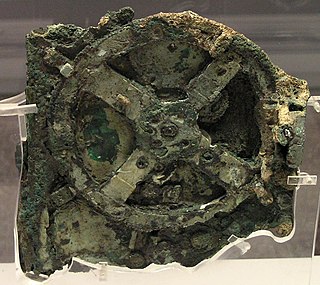 W
WThe Antikythera mechanism is an ancient Greek hand-powered orrery, described as the oldest example of an analogue computer, used to predict astronomical positions and eclipses decades in advance. It could also be used to track the four-year cycle of athletic games which was similar to an Olympiad, the cycle of the ancient Olympic Games.
 W
WThe ball-and-disk integrator is a key component of many advanced mechanical computers. Through simple mechanical means, it performs continual integration of the value of an input. Typical uses were the measurement of area or volume of material in industrial settings, range-keeping systems on ships, and tachometric bombsights. The addition of the torque amplifier by Vannevar Bush led to the differential analysers of the 1930s and 1940s.
 W
WA billiard-ball computer, a type of conservative logic circuit, is an idealized model of a reversible mechanical computer based on Newtonian dynamics, proposed in 1982 by Edward Fredkin and Tommaso Toffoli. Instead of using electronic signals like a conventional computer, it relies on the motion of spherical billiard balls in a friction-free environment made of buffers against which the balls bounce perfectly. It was devised to investigate the relation between computation and reversible processes in physics.
 W
WGeniac was an educational toy billed as a "computer" designed and marketed by Edmund Berkeley, with Oliver Garfield from 1955 to 1958, but with Garfield continuing without Berkeley through the 1960s. The name stood for "Genius Almost-automatic Computer" but suggests a portmanteau of genius and ENIAC.
 W
WThe differential analyser is a mechanical analogue computer designed to solve differential equations by integration, using wheel-and-disc mechanisms to perform the integration. It was one of the first advanced computing devices to be used operationally. The original machines could not add, but then it was noticed that if the two wheels of a rear differential are turned, the drive shaft will compute the average of the left and right wheels. A simple gear ratio of 1:2 then enables multiplication by two, so addition are achieved. Multiplication is just a special case of integration, namely integrating a constant function.
 W
WThe Digi-Comp I was a functioning, mechanical digital computer sold in kit form. It was originally manufactured from polystyrene parts by E.S.R., Inc. starting in 1963 and sold as an educational toy for US$4.99.
 W
WA domino computer is a mechanical computer built using dominoes to represent mechanical amplification or logic gating of digital signals. Because of the existence of multiple schemes, domino computer will be used in this article to denote any particular scheme that uses the mentioned base phenomenon for building machines equivalent to a computer. This choice of terminology may be somewhat arbitrary, because only few resources write on this topic.
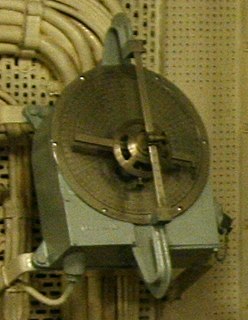 W
WThe Dumaresq is a mechanical calculating device invented around 1902 by Lieutenant John Dumaresq of the Royal Navy. It is an analogue computer that relates vital variables of the fire control problem to the movement of one's own ship and that of a target ship.
 W
WGeniac was an educational toy billed as a "computer" designed and marketed by Edmund Berkeley, with Oliver Garfield from 1955 to 1958, but with Garfield continuing without Berkeley through the 1960s. The name stood for "Genius Almost-automatic Computer" but suggests a portmanteau of genius and ENIAC.
 W
WA logical abacus is a mechanical digital computer.
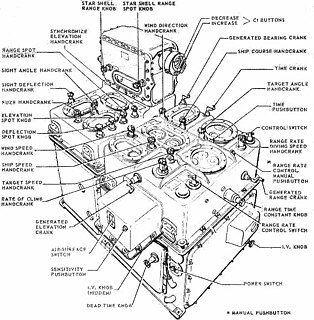 W
WThe Mark 1, and later the Mark 1A, Fire Control Computer was a component of the Mark 37 Gun Fire Control System deployed by the United States Navy during World War II and up to 1969 or later. It was developed by Hannibal Ford of the Ford Instrument Company. It was used on a variety of ships, ranging from destroyers to battleships. The Mark 37 system used tachymetric target motion prediction to compute a fire control solution. Weighing more than 3,000 pounds (1,400 kg), the Mark 1 itself was installed in the plotting room, a watertight compartment that was located deep inside the ship's hull to provide as much protection against battle damage as possible.
 W
WMechanical counters are digital counters built using mechanical components. Long before electronics became common, mechanical devices were used to count events. They typically consist of a series of disks mounted on an axle, with the digits zero through nine marked on their edge. The right most disk moves one increment with each event. Each disk except the left-most has a protrusion that, after the completion of one revolution, moves the next disk to the left one increment. Such counters were used as odometers for bicycles and cars and in tape recorders and fuel dispensers and to control manufacturing processes. One of the largest manufacturers was the Veeder-Root company, and their name was often used for this type of counter. Mechanical counters can be made into electromechanical counters, that count electrical impulses, by adding a small solenoid.
 W
WThe Minoan Moulds of Palaikastro are two double-sided pieces of schist, formed in the Minoan period as casting moulds for plaques with figures and symbols. These include female figures with raised arms, labrys double axes and opium poppy flowers or capsules, two double axes with indented edges, the Horns of Consecration symbol, and a sun-like disc with complex markings, which has been claimed by some researchers to be for making objects to use in astronomical predictions of solar and lunar eclipses.
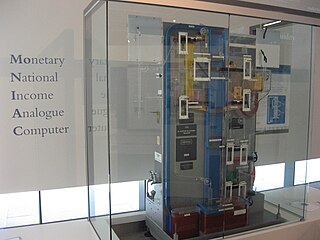 W
WThe MONIAC also known as the Phillips Hydraulic Computer and the Financephalograph, was created in 1949 by the New Zealand economist Bill Phillips to model the national economic processes of the United Kingdom, while Phillips was a student at the London School of Economics (LSE). The MONIAC was an analogue computer which used fluidic logic to model the workings of an economy. The MONIAC name may have been suggested by an association of money and ENIAC, an early electronic digital computer.
 W
WThe Norden Mk. XV, known as the Norden M series in U.S. Army service, is a bombsight that was used by the United States Army Air Forces (USAAF) and the United States Navy during World War II, and the United States Air Force in the Korean and the Vietnam Wars. It was an early tachometric design that directly measured the aircraft's ground speed and direction, which older bombsights could only estimate with lengthy manual procedures. The Norden further improved on older designs by using an analog computer that continuously recalculated the bomb's impact point based on changing flight conditions, and an autopilot that reacted quickly and accurately to changes in the wind or other effects.
 W
WThe Vickers Range Clock was a clockwork device used by the Royal Navy for continuously calculating the range to an enemy ship.
 W
WGlobus IMP instruments were spacecraft navigation instruments used in Soviet and Russian crewed spacecraft. The IMP acronym stems from the Russian expression Indicator of position in flight, but the instrument is informally referred to as the Globus. It displays the nadir of the spacecraft on a rotating terrestrial globe. It functions as an onboard, autonomous indicator of the spacecraft's location relative to Earth coordinates. An electro-mechanical device in the tradition of complex post-World War II clocks such as master clocks, the Globus IMP instrument incorporates hundreds of mechanical components common to horology. This instrument is a mechanical computer for navigation akin to the Norden bombsight. It mechanically computes complex functions and displays its output through mechanical displacements of the globe and other indicator components. It also modulates electric signals from other instruments.
 W
WThe Z1 was a motor-driven mechanical computer designed by Konrad Zuse from 1936 to 1937, which he built in his parents' home from 1936 to 1938. It was a binary electrically driven mechanical calculator with limited programmability, reading instructions from punched celluloid film.
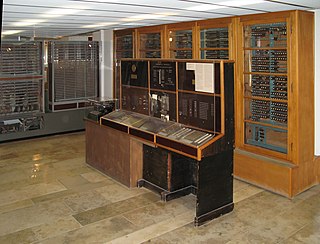 W
WThe Z4 was arguably the world's first commercial digital computer. It was designed by German engineer and early computer scientist Konrad Zuse and built from 1942 to 1945 by the company he founded, Zuse Apparatebau. The Z4 was Zuse's final target for the Z3 design. Like the earlier Z2, it comprised a combination of mechanical memory and electromechanical logic, so was not a true electronic computer.